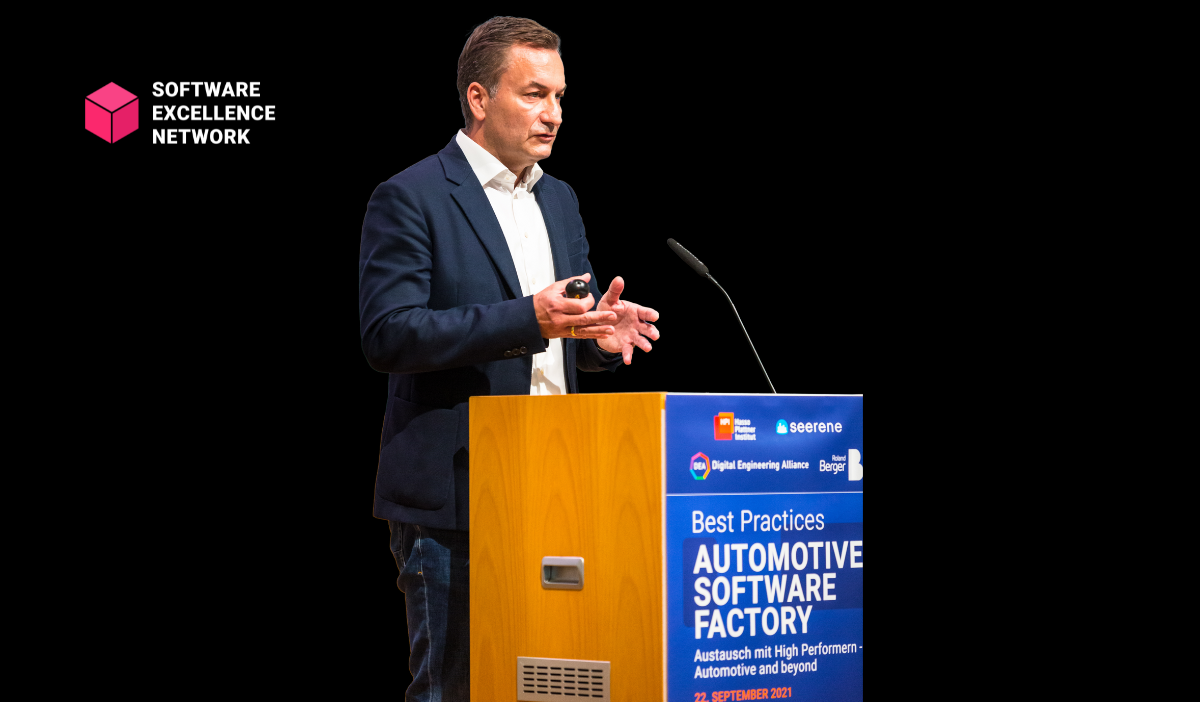
Dr. Elmar Pritsch, former President of Bosch Connected Mobility Solutions, shared key insights into the challenges and success factors of digital transformation in the automotive industry during his masterclass at the Automotive Software Factory Executive Summit. His presentation underscored the urgency for automotive companies to evolve their approach to software development, emphasizing three critical pillars: entrepreneurial leadership, disciplined execution, and modern software architectures.

One of Dr. Pritsch’s main arguments was that traditional management approaches in the automotive sector are insufficient to navigate the complexities of software-driven transformation. He stressed that company leaders must embrace an entrepreneurial mindset—one that prioritizes speed, agility, and innovation. Unlike the structured, hierarchical decision-making models of the past, software development requires leaders who are willing to take calculated risks, foster a culture of experimentation, and empower teams to make independent decisions.
In the past, automotive companies could afford long development cycles, but the pace of technological change now demands a more dynamic approach. Companies must shift from rigid, multi-year planning processes to iterative development strategies that allow for continuous improvement and adaptation. This shift requires leaders who not only understand the strategic value of software but who also champion a digital-first culture within their organizations.
While vision and strategy are essential, Dr. Pritsch highlighted the importance of disciplined execution in ensuring that software transformation initiatives deliver measurable value. Many automotive companies have launched ambitious digital projects, only to struggle with integrating them into existing structures and workflows. Execution challenges arise due to legacy processes, siloed teams, and resistance to change.
To overcome these barriers, organizations must establish clear governance structures for software development, implement robust performance tracking mechanisms, and cultivate cross-functional collaboration. Agile methodologies, continuous integration, and DevOps practices can help bridge the gap between software development and operational deployment. However, these methods require more than just procedural changes—they necessitate a fundamental shift in mindset, where iteration and learning are prioritized over rigid, top-down control.
Dr. Pritsch also emphasized the importance of workforce transformation. Companies must invest in training and upskilling their employees to work effectively in a software-centric environment. Without a strong talent base and an execution-focused culture, even the most well-designed strategies will struggle to materialize.
A central theme of Dr. Pritsch’s presentation was the need to move away from monolithic, hardware-dependent software architectures. In traditional automotive engineering, software development has often been tightly coupled with hardware, leading to long development cycles, costly updates, and limited scalability. As vehicles become more software-defined, companies must adopt modular, service-oriented architectures that allow for greater flexibility and faster innovation.
Decoupling software from hardware enables a more efficient update process, reduces dependencies on specific hardware platforms, and allows for over-the-air (OTA) software updates. This shift is crucial for keeping vehicles competitive in an era where software capabilities—such as advanced driver assistance systems (ADAS), connected services, and autonomous driving features—are key differentiators in the market.
Additionally, Dr. Pritsch pointed out that adopting a cloud-native approach to automotive software development can significantly improve scalability and collaboration. By leveraging cloud-based development environments and digital twins, companies can streamline software testing, reduce costs, and accelerate time-to-market for new features.
Dr. Pritsch’s insights make it clear that the future of the automotive industry hinges on its ability to master software development at scale. Entrepreneurial leadership, disciplined execution, and modern software architectures are not just theoretical concepts—they are essential building blocks for companies aiming to remain competitive in the digital age.
Automakers that successfully embrace these principles will be better positioned to deliver innovative, high-quality software solutions, enhance vehicle performance, and create new revenue streams through digital services. However, achieving software excellence requires a deep transformation at every level of the organization. Those who act decisively and invest in the right capabilities today will shape the future of mobility for years to come.
The Software Excellence Network is an exclusive community for executives who see strategic software development as a decisive success factor for companies. It brings together top decision-makers from various industries to discuss best practices, new technologies and innovative approaches in software production. Through regular events, expert panels and exclusive analyses, the network supports companies in making their software development processes more efficient, cost-effective and future-proof.
Note for our readers: I've tried to write a journalistic summary of Dr. Pritsch's ideas, but to get the full context, I recommend you watch the entire masterclass below. If you have any questions, you can write to us.
These Stories on Events/Webinars
August-Bebel-Str. 26-53
14482 Potsdam, Germany
hello@seerene.com
+49 (0) 331 706 234 0
Generative AI Seerene GmbH
August-Bebel-Str. 26-53
14482 Potsdam, Germany
hello@seerene.com
+49 331 7062340